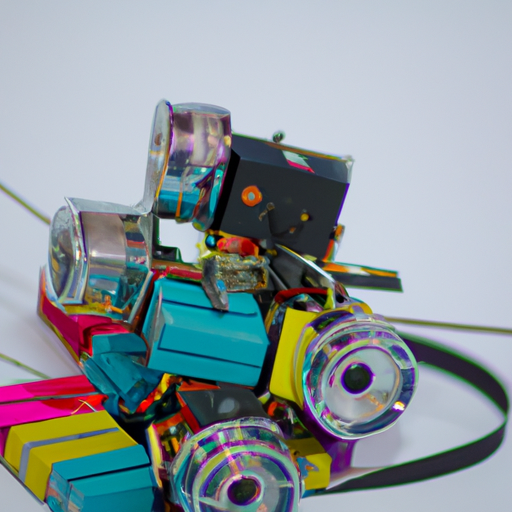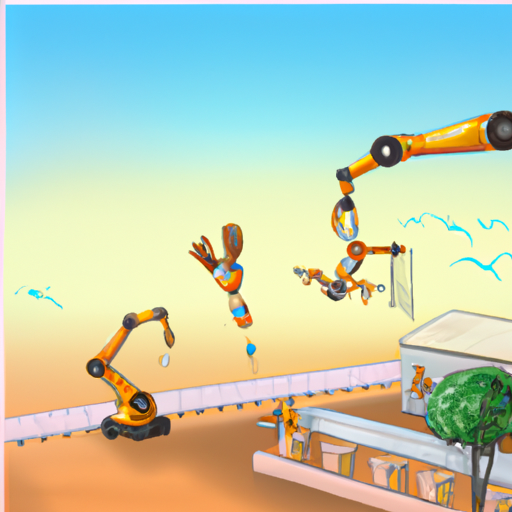-
Table of Contents
“Unlock the Possibilities of Robotics with Our High-Performance Hardware and Components.”
Introduction
Robotics hardware and components are the building blocks of robotic systems. They include actuators, sensors, controllers, and other components that enable robots to interact with their environment. Actuators are the motors that move the robot, while sensors detect changes in the environment and provide feedback to the robot. Controllers are the brains of the robot, providing instructions to the actuators and sensors. Other components, such as batteries, power supplies, and communication systems, are also necessary for a robot to function. By combining these components, robots can be designed to perform a variety of tasks.
Exploring the Latest Advances in Robotics Actuators
Robotics actuators are an essential component of modern robotics technology. They are responsible for providing the necessary force and motion to enable robots to perform their tasks. In recent years, there have been significant advances in the development of robotics actuators, which have enabled robots to become more efficient and effective. This article will explore the latest advances in robotics actuators and their implications for the future of robotics technology.
One of the most significant advances in robotics actuators is the development of brushless DC motors. These motors are capable of providing higher torque and power than traditional brushed DC motors, allowing robots to perform more complex tasks. Additionally, brushless DC motors are more efficient and require less maintenance than their brushed counterparts. This makes them ideal for use in robotics applications.
Another important advancement in robotics actuators is the development of smart actuators. Smart actuators are capable of sensing their environment and adjusting their behavior accordingly. This allows robots to respond to changes in their environment and adapt their behavior accordingly. This is especially useful for robots that are used in hazardous environments, as they can adjust their behavior to avoid potential dangers.
The development of artificial muscles is another important advancement in robotics actuators. Artificial muscles are capable of providing greater force and motion than traditional actuators, allowing robots to perform more complex tasks. Additionally, artificial muscles are more efficient and require less maintenance than traditional actuators. This makes them ideal for use in robotics applications.
Finally, the development of 3D printing technology has enabled the production of custom-made actuators. This allows robots to be designed with specific actuators that are tailored to their specific tasks. This is especially useful for robots that are used in hazardous environments, as they can be designed with actuators that are specifically designed to handle the conditions of the environment.
Overall, the advances in robotics actuators have enabled robots to become more efficient and effective. This has allowed robots to be used in a variety of applications, from hazardous environments to manufacturing. As the technology continues to develop, robots will become even more capable and efficient.
How to Choose the Right Robotics Sensor for Your Application
Robotics sensors are essential components of any robotic system, as they provide the robot with the ability to interact with its environment. Choosing the right sensor for a particular application can be a daunting task, as there are a wide variety of sensors available on the market. In order to make the best choice, it is important to consider the specific requirements of the application.
The first step in selecting the right sensor is to determine the type of data that needs to be collected. Different sensors are designed to measure different types of data, such as temperature, pressure, light, sound, and motion. Once the type of data has been identified, the next step is to determine the range of values that need to be measured. This will help narrow down the selection of sensors to those that are capable of measuring the desired range.
The next step is to consider the environment in which the sensor will be used. Different sensors are designed to operate in different environments, such as underwater, in extreme temperatures, or in hazardous locations. It is important to select a sensor that is designed to operate in the environment in which it will be used.
The accuracy of the sensor is also an important factor to consider. Different sensors have different levels of accuracy, and it is important to select a sensor that is capable of providing the desired level of accuracy.
Finally, it is important to consider the cost of the sensor. Different sensors have different price points, and it is important to select a sensor that is within the budget of the application.
By considering the specific requirements of the application, it is possible to select the right sensor for the job. By taking the time to research the available options, it is possible to find a sensor that is capable of providing the desired level of accuracy and performance at a reasonable cost.
The Benefits of Using Robotic Grippers in Automation
Robotic grippers are an essential component of automation systems, providing the ability to manipulate objects and materials in a variety of ways. They are used in a wide range of industries, from manufacturing to food processing, and offer a number of advantages over traditional manual methods.
Robotic grippers are highly precise and can be programmed to perform complex tasks with a high degree of accuracy. This makes them ideal for applications where precision is essential, such as in the assembly of small components. They can also be programmed to handle a variety of materials, from soft fabrics to hard metals, allowing them to be used in a wide range of applications.
Robotic grippers are also much faster than manual methods, allowing for increased production speeds and improved efficiency. This can result in significant cost savings, as well as improved product quality. Additionally, robotic grippers are much safer than manual methods, as they are designed to reduce the risk of injury to workers.
Robotic grippers are also highly reliable and require minimal maintenance. This makes them ideal for use in harsh environments, such as those found in industrial settings. Additionally, they can be easily integrated into existing automation systems, allowing for a seamless transition from manual to automated processes.
Overall, robotic grippers offer a number of advantages over traditional manual methods. They are highly precise, fast, reliable, and safe, making them an ideal choice for a variety of automation applications.
Understanding the Different Types of Robotics Motors and Their Uses
Robotics motors are an essential component of any robotic system, providing the power and control necessary to move and manipulate objects. There are several different types of robotics motors, each with its own unique characteristics and uses. Understanding the different types of motors and their uses is essential for designing and building effective robotic systems.
The most common type of robotics motor is the DC motor. DC motors are powered by direct current and are used in a wide variety of applications, from small toys to large industrial robots. DC motors are relatively simple to control and can be used to provide precise control over speed and position.
Stepper motors are another type of robotics motor. Stepper motors are powered by alternating current and are used in applications where precise control over position is required. Stepper motors are often used in robotics applications where precise positioning is required, such as in robotic arms and legs.
Servo motors are a type of robotics motor that is used to provide precise control over position and speed. Servo motors are powered by direct current and are used in applications where precise control over position and speed is required. Servo motors are often used in robotics applications where precise positioning is required, such as in robotic arms and legs.
Brushless DC motors are a type of robotics motor that is powered by direct current and is used in applications where high torque and speed are required. Brushless DC motors are often used in robotics applications where high torque and speed are required, such as in robotic arms and legs.
Finally, linear motors are a type of robotics motor that is used to provide linear motion. Linear motors are powered by direct current and are used in applications where precise linear motion is required. Linear motors are often used in robotics applications where precise linear motion is required, such as in robotic arms and legs.
Understanding the different types of robotics motors and their uses is essential for designing and building effective robotic systems. Each type of motor has its own unique characteristics and uses, and it is important to understand these characteristics in order to choose the right motor for the application.
Conclusion
Robotics hardware and components are essential for the development of robots and automation systems. They provide the necessary components for robots to interact with their environment and perform tasks. Actuators, sensors, and other components are used to control the robot’s movements and detect changes in the environment. With the advancement of technology, robotics hardware and components are becoming more sophisticated and reliable, allowing robots to perform more complex tasks. As robotics technology continues to evolve, the possibilities for robotics hardware and components are endless.




